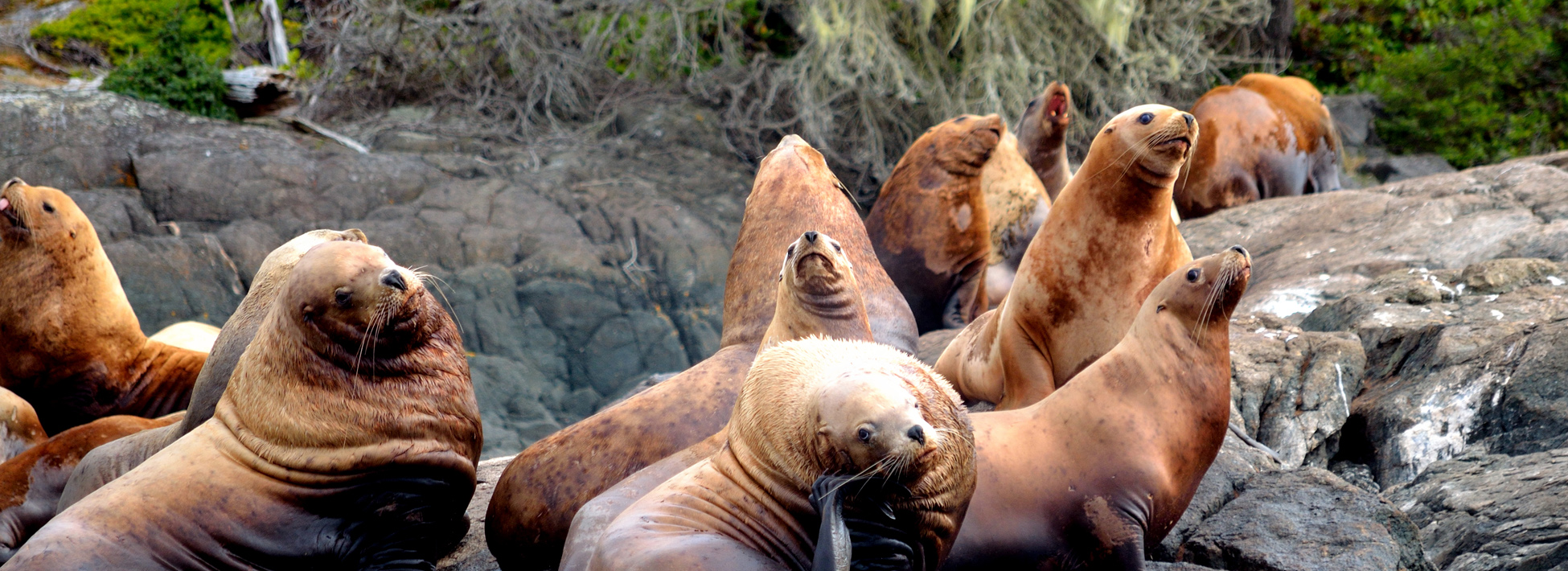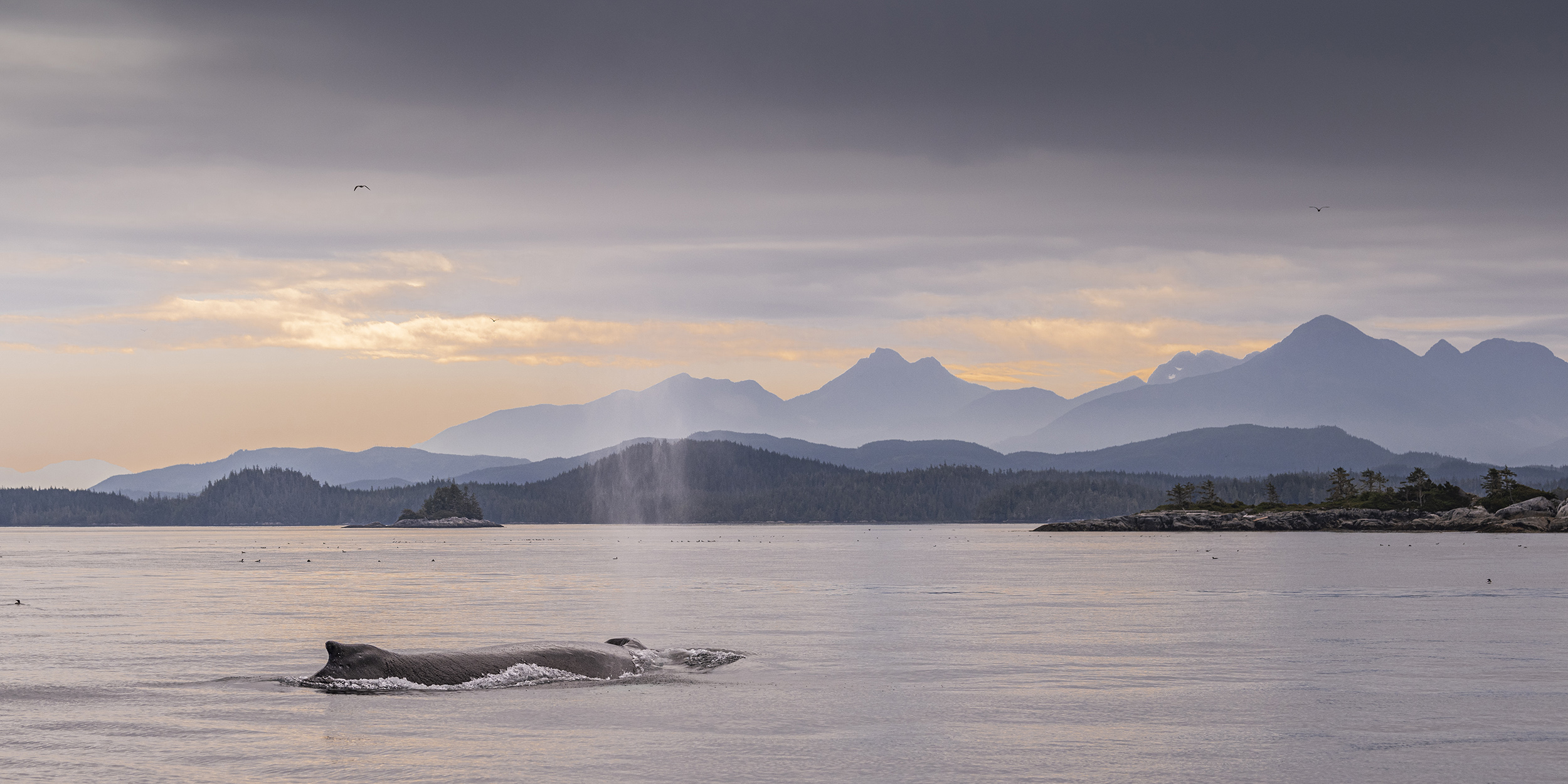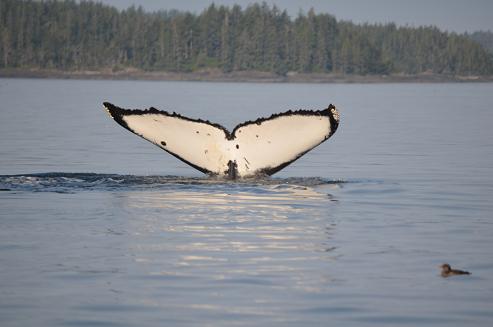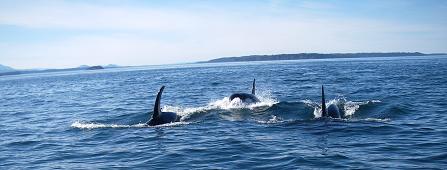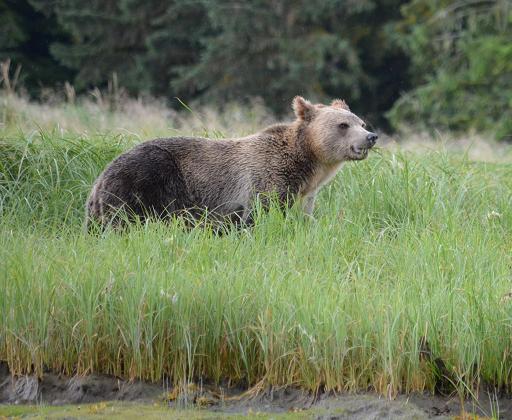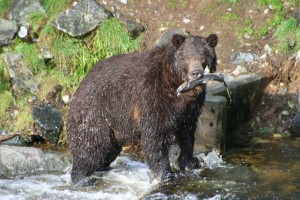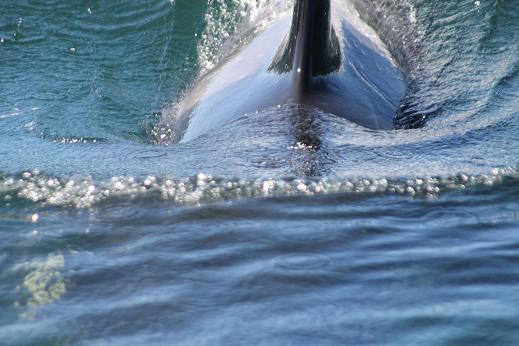Grizzly Bear and Wildlife Viewing Blog: Monthly Archives: November 2014
Visiting Killer Whales / Orca
The whale / orca watching requires a short run to Johnstone Strait in the area of Telegraph Cove on BC’s Vancouver Island. Guidelines are in place to prevent whale harassment but that does not mean that we don’t manage to obtain good photos. Orca being curious will frequently investigate us while we watch them. The centre orca in this photo shows that they are coming toward us for a closer look.
Grizzly Bears are omnivorous
In the spring the grizzly bears we view on lodges wilderness tours are primarily grazers. They some down to the shores of Knight Inlet to eat the sedge grass which is very high in protein this sustains them until the salmon enter the rivers of British Columbia’s coast in mid-August. The morning grizzly bear tour uses 18 to 20 foot boats to travel up Knight Inlet to the Glendale River where we transfer to smaller flat bottom boats that allow us to drift along the shore to watch and hear the bears eating.
Grizzly at Work
After August 25 the Grizzly Bear Lodge’s guests travel up Knight Inlet and the grizzly watching takes place from viewing stands on the Glendale River. This is a classic pose after a good catch. A salmon in the mouth is the reasons the bears come to this part of British Columbia’s coast and also the reason we take you to the premier grizzly viewing location on the coast of British Columbia.
Black Bear in Grizzly Bear Territory
 Black bears are normally on the beaches to turnover rocks. This inter-tidal zone “food” is high in protein and is made up of crab, clams, barnacles, amphipods and other tiny invertebrates. The “beach food” is important because plant food is relatively scarce during spring and bears will continue to loose weight until well into June. Plant foods make up the majority of a bear’s diet (sometimes, as much as 90%). The black bears are kept from the salmon rivers by the grizzly so the beaches remain one of their main sources of protein all year. This bear is playing the acrobat by balancing on a log while scraping off barnacles and muscles.
Black bears are normally on the beaches to turnover rocks. This inter-tidal zone “food” is high in protein and is made up of crab, clams, barnacles, amphipods and other tiny invertebrates. The “beach food” is important because plant food is relatively scarce during spring and bears will continue to loose weight until well into June. Plant foods make up the majority of a bear’s diet (sometimes, as much as 90%). The black bears are kept from the salmon rivers by the grizzly so the beaches remain one of their main sources of protein all year. This bear is playing the acrobat by balancing on a log while scraping off barnacles and muscles.
Grizzly Bear with triplets
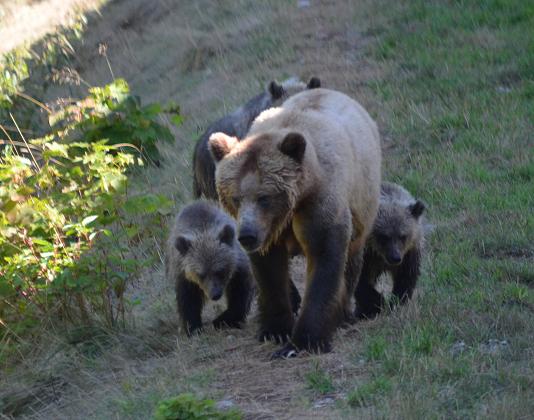 This mother grizzly bear and her three cubs were a common site on the Glendale River this fall. There is a finger of land that connects the two viewing stands used by the lodge and the bears also use this as they travel to various parts of the river to catch and eat the salmon. The view from the stands provide many opportunities for excellent photos.
This mother grizzly bear and her three cubs were a common site on the Glendale River this fall. There is a finger of land that connects the two viewing stands used by the lodge and the bears also use this as they travel to various parts of the river to catch and eat the salmon. The view from the stands provide many opportunities for excellent photos.
Eagles on ALL tours
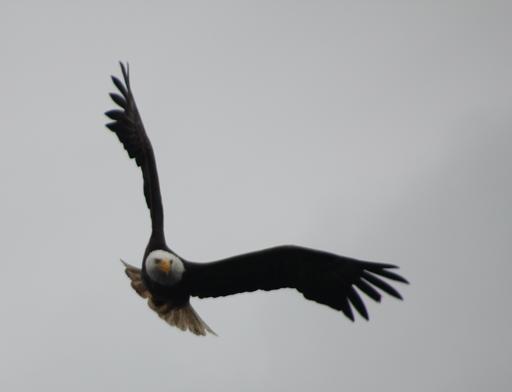 Bald eagles are viewed on all the tours from the lodge. It does not matter if you are on your day trip to the grizzlies in the Glendale River, whale watching in the Johnstone Strait or on the river with Trapper Rick. In fact this picture was taken from the front lawn of the lodge on Minstrel Island. The bald eagles with their white head are a majestic bird when flying over head or perched in a tree along the shore.
Bald eagles are viewed on all the tours from the lodge. It does not matter if you are on your day trip to the grizzlies in the Glendale River, whale watching in the Johnstone Strait or on the river with Trapper Rick. In fact this picture was taken from the front lawn of the lodge on Minstrel Island. The bald eagles with their white head are a majestic bird when flying over head or perched in a tree along the shore.
Spring Grizzly Bears
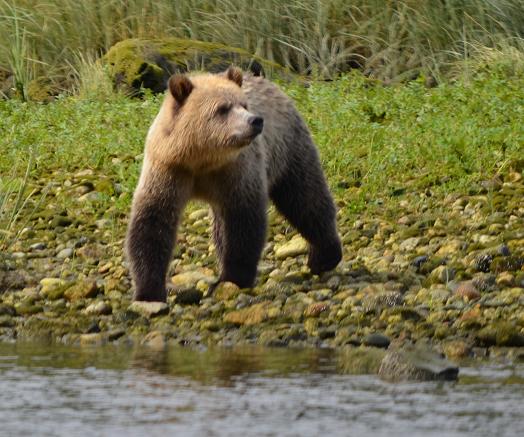 Grizzly bear viewing in the spring from Grizzly Bear Lodge occurs in the mouth of the Glendale River. This river estuary is located an hour and fifteen minute boat ride from the lodge on Minstrel Island. The spring grizzlies are in this area for the protein rich sedge grass and the abundance of protein obtained from turning over rocks on the beach at low tide. Viewing takes place from a sixteen foot skiff, which allows us good viewing in the shallow waters along the shore and in the Glendale River.
Grizzly bear viewing in the spring from Grizzly Bear Lodge occurs in the mouth of the Glendale River. This river estuary is located an hour and fifteen minute boat ride from the lodge on Minstrel Island. The spring grizzlies are in this area for the protein rich sedge grass and the abundance of protein obtained from turning over rocks on the beach at low tide. Viewing takes place from a sixteen foot skiff, which allows us good viewing in the shallow waters along the shore and in the Glendale River.
